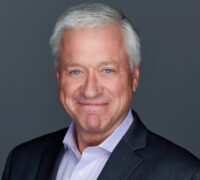
How to scale your AI use cases: A checklist
The business case for AI is realized when the application is scaled, not in the use cases of the pilot phase. Use the checklist below at the outset to ensure the transition...

by Michael D. Watkins Published March 28, 2022 in Brain Circuits • 2 min read
Newly appointed CEOs and other senior leaders must concentrate their energy on getting the right people around them, as failure to act quickly can have serious consequences. What is the most common regret I hear from senior executives who have transitioned into new roles? Regardless of whether they were promoted internally or hired from the outside, the answer is the same: not moving quickly enough to get the right team in place.
Executives who learned this lesson the hard way noted three main consequences:
An overload of work: They didn’t have the people they needed to develop and realize their vision and strategy, so they and others on the team had to shoulder more of the load themselves.
An opportunity for politics to interfere with the agenda: A failure to move fast opened the door to divisive political maneuvering by underperformers trying to delay the inevitable, or disappointed rivals still fighting the last war.
Loss of credibility: This is more subtle but can be the most damaging effect of not taking swift action to set up your own team. Executives who failed to do this have noted it raised questions about their ability to make hard calls. Remember – people will be watching and will know when you aren’t moving fast enough to fix obvious problems.
Further reading:
The First 90 Days: Proven Strategies for Getting Up to Speed Faster and Smarter, Updated and Expanded by Michael Watkins
Why you must move fast to get the right team in place by Michael Watkins

Professor of Leadership and Organizational Change at IMD
Michael D Watkins is Professor of Leadership and Organizational Change at IMD, and author of The First 90 Days, Master Your Next Move, Predictable Surprises, and 12 other books on leadership and negotiation. His book, The Six Disciplines of Strategic Thinking, explores how executives can learn to think strategically and lead their organizations into the future. A Thinkers 50-ranked management influencer and recognized expert in his field, his work features in HBR Guides and HBR’s 10 Must Reads on leadership, teams, strategic initiatives, and new managers. Over the past 20 years, he has used his First 90 Days® methodology to help leaders make successful transitions, both in his teaching at IMD, INSEAD, and Harvard Business School, where he gained his PhD in decision sciences, as well as through his private consultancy practice Genesis Advisers. At IMD, he directs the First 90 Days open program for leaders taking on challenging new roles and co-directs the Transition to Business Leadership (TBL) executive program for future enterprise leaders, as well as the Program for Executive Development.

November 27, 2025 • by Didier Bonnet, Achim Plueckebaum in Brain Circuits
The business case for AI is realized when the application is scaled, not in the use cases of the pilot phase. Use the checklist below at the outset to ensure the transition...

November 26, 2025 • by Albrecht Enders, Robin de Haas in Brain Circuits
Mastering your vocal presence is an essential dimension of leadership. Try these simple exercises to develop a more commanding presence that will resonate deeply with your audience. ...

November 25, 2025 • by Cindy Wolpert in Brain Circuits
Longevity was once seen by traditionalists as a proxy for good leadership, but successive generations attach less value to length of time served. As with anything, there are benefits and disadvantages. Here...

November 20, 2025 • by Richard Roi in Brain Circuits
Progressing internal talent helps hedge against new CEO failure, but it all hinges on integrating leadership development and succession planning. Ric Roi identifies the warning signs for organizations that fail to put...
Explore first person business intelligence from top minds curated for a global executive audience